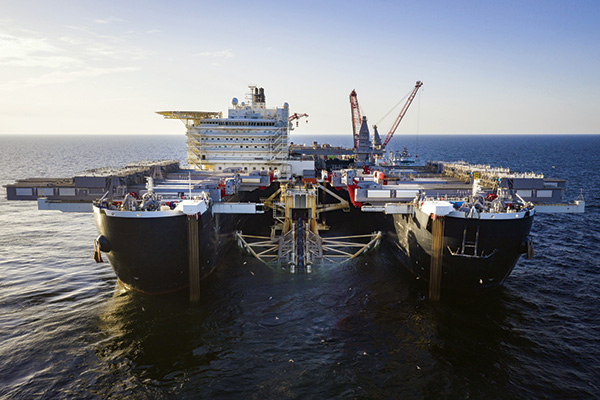Ukraine to Tap 109 MMcm/d of Spare Gas Capacity to Offset Nord Stream 1 Flows
(Reuters) — Ukraine has around 109 million cubic meters a day (MMcm/d) of spare gas capacity through a transit route to Europe which could be used to offset lower flows through the Nord Stream 1 pipeline, Ukraine's gas transmission operator said on Monday.
Last week, Russia's state-controlled gas firm Gazprom reduced gas supply via Nord Stream 1, which runs under the Baltic Sea to Germany, by around 40%.
In May, GTSOU, which runs Ukraine's gas system, suspended the flow of gas through its Sokhranivka transit point, which accounts for almost a third Russian deliveries to Europe through Ukraine, but said it could move the flows to the Sudzha interconnection point further west. Gazprom, though, said at the time it was "technologically impossible" to move all volumes there.
Ukraine has remained a major transit route for Russian gas to Europe even after Moscow's invasion.
GTSOU chief executive Sergiy Makogon told Reuters in an interview Sudzha's technical capacity was 244 mcm per day. That compared with Nord Stream's regular capacity of round 160 MMcm/d, lately capped by Gazprom at 96 MMcm/d.
Gazprom has already paid and booked 77.2 MMcm/d capacity on the Sudzha route, but has been using only a part of that, with its current nominations, or requests for gas, at 41.7 MMcm/d, he added.
In addition, GTSOU has said that Gazprom can transfer 32.4 MMcm/d booked capacity from Sokhranivka to the Sudzha point but it has not used this option. Total spare capacity amounts to 109.8 MMcm/d.
Makogon rejected Gazprom's claims that transferring flows through Sudzha was technically impossible, saying that transit through the Sudzha route reached its technical capacity in 2018 and 2019.
Gazprom did not immediately reply to a Reuters request for comment on unused spare capacity at Sudzha. It has said previously that supply volumes are based on customers' requests and are updated daily.
The Kremlin said on Monday that Europe only had itself to blame for the gas crunch and that Russia had gas to supply but equipment currently being serviced in Canada for the Nord Stream 1 pipeline had to be returned first.
But Makogon said Russia had several options to sustain its supplies if it wanted to. In addition to Sudzha, there was 90 MMcm/d of idle capacity via the Yamal-Europe pipeline, which sends natural gas from Russia to Germany via Poland, and which has not been used for more than a month, he said.
"They (Gazprom) are not interested in supplying more to Europe. They want to push gas prices higher," Makogon said.
Dutch wholesale gas prices, the European benchmark, were up 7% on Monday.
Faced with reduced flows of Russian gas, Europe's biggest buyers were racing to find alternative fuel supplies fill up gas storage and avert an energy crisis in winter.
Makogon said Ukraine was now injecting around 1 billion cubic meters (Bcm) of gas a month into its domestic storage sites in preparation for winter. Ukraine estimates this year's gas consumption at around 21 Bcm, down from 29 Bcm in 2021.
Ukraine supports a European Union embargo on Russian gas, Makogon said, but is aware it might have to be done gradually.
"I understand European people are not happy with higher prices for gas and higher prices for gasoline and diesel but it is nothing compared to the bombing which every day we feel in our cities," he added.
Related News
Related News

- Enbridge Plans 86-Mile Pipeline Expansion, Bringing 850 Workers to Northern B.C.
- Intensity, Rainbow Energy to Build 344-Mile Gas Pipeline Across North Dakota
- U.S. Moves to Block Enterprise Products’ Exports to China Over Security Risk
- 208-Mile Mississippi-to-Alabama Gas Pipeline Moves Into FERC Review
- Court Ruling Allows MVP’s $500 Million Southgate Pipeline Extension to Proceed
- U.S. Pipeline Expansion to Add 99 Bcf/d, Mostly for LNG Export, Report Finds
- A Systematic Approach To Ensuring Pipeline Integrity
- 275-Mile Texas-to-Oklahoma Gas Pipeline Enters Open Season
- LNG Canada Start-Up Fails to Lift Gas Prices Amid Supply Glut
- Kinder Morgan Gas Volumes Climb as Power, LNG Demand Boost Pipeline Business





Comments